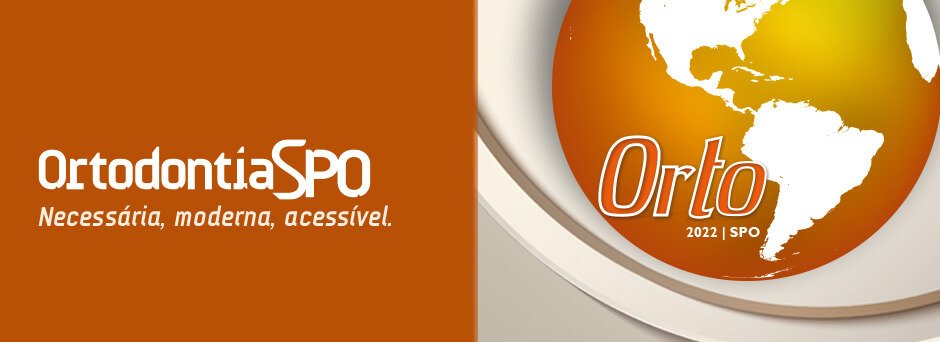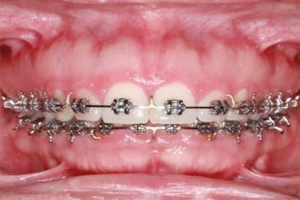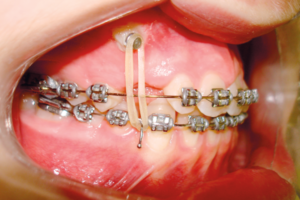RESUMO
Introdução: mudanças funcionais da respiração durante o crescimento podem influenciar o desenvolvimento craniofacial, e a atresia maxilar tem a respiração bucal como uma das principais causas. O desequilíbrio do fluxo aéreo nasal acarreta uma série de mudanças posturais e estruturais, como posicionamento da língua e mandíbula, para facilitar a passagem de ar pela boca. Essas alterações poderiam predispor à apneia obstrutiva do sono pela constrição das vias aéreas. Considerando a importância dos espaços aéreos na correta função estomatognática, este estudo avaliou as regiões retropalatal e retroglossal pré e pós-expansão rápida da maxila em crianças respiradoras bucais com e sem distúrbios do sono. Métodos: 36 pacientes respiradores bucais, sendo 12 (média de idade de 9,8 anos) com apneia obstrutiva do sono residual pós-adenoamigdalectomia (G1) e 24 (média de idade de 8,8 anos) sem queixas respiratórias do sono (G2). Todos foram submetidos à expansão rápida da maxila e avaliados nos tempos pré e pós seis meses da expansão rápida da maxila, por meio de tomografia computadorizada multislice e questionário validado de qualidade de vida. Resultados: o volume e área retropalatal e retroglossal aumentaram significativamente nos dois grupos (p < 0.05). A exceção foi a área retroglossal com aumento não significativo (p=0.196) no G1. Houve melhora da qualidade de vida em G1 e G2. Conclusão: a expansão rápida da maxila promoveu o aumento de volume aéreo da nasofaringe e orofaringe no curto prazo, nos dois grupos, com melhora da qualidade de vida. Os parâmetros avaliados foram semelhantes nos grupos G1 e G2.
Palavras-chave – Expansão maxilar; Respiração bucal; Qualidade de vida; Tomografia computadorizada espiral; Distúrbios do sono.
ABSTRACT
Introduction: changes in the normal function of breathing during the growth can play a role in the craniofacial development. The transverse maxillary discrepancy has mouth breathing as one of its main ethiology. An imbalance in the breathing pattern causes a series of postural and structural changes, such as changes in the position of the tongue and mandible to facilitate the passage of air through the mouth. Furthermore, these alterations could predispose to obstructive sleep apnea due to the constriction of the dimensions of the airways. Considering the importance of airway in the establishment of correct stomatognathic function, this study proposes to evaluate the retropalatal and retroglossal airway using tomographic images pre- and post-rapid maxillary expansion of mouth breathing children, correlating in the short term, the possible dimensional changes when evaluating mouth breathing children with and without sleep disorders. Methods: 36 mouth breathing patients (mean age of 9.3 years): 12 (mean age of 9.8 years) with residual obstructive sleep apnea after adenotonsillectomy, comprising group G1 and 24 (mean age 8.8 years) without sleep disorders composing the G2 group. All children underwent rapid maxillary expansion and were evaluate by computed tomography pre and post 6 months of rapid maxillary expansion. Subjective improvements in quality of life were assessed using a validated questionnaire. Results: retropalatal volume and area increased significantly post rapid maxillary expansion in both groups (p < 0.05). The only exception was the retroglossal area, whose increase in children with sleep-disordered was not statistically significant (p=0.196). The improvement in the quality of life was similar in both groups. Conclusion: in short term, the rapid expansion of the maxilla led to an increase in the airway of the nasopharynx and oropharynx volume. Quality of life improved in both groups.
Key words – Maxillary expansion; Mouth breathing; Quality of life; Spiral computed tomography; Sleep disorders.






